Journeying Into Zero-Waste
A Guide For Beginners
Whether you’re a complete stranger to the idea of zero-waste or have attempted at implementing some methods yourself – there’s plenty to learn. Zero-waste is a way of living that encourage us to minimise the amount of waste we generate on a daily basis; which encompasses everything from grocery shopping and restaurant dining to the clothes we wear and the cars we drive. Through the key principles of ‘reduce, reuse, recycle’ – zero-waste focuses on extending the life cycle of resources for as long as possible and preventing any trash from entering the landfill, incineration or the ocean.

In a developing country like Pakistan where awareness around environmental impacts and sustainability is low, a majority of the population doesn’t think twice about what they consume and throw in their rubbish bins. In Karachi alone (the world’s third largest city!), it is estimated that an average 13,000 tonnes of solid waste is generated everyday, while “bureaucratic hurdles, lack of urban planning and inadequate waste management equipment only contribute to the problem” (Export Gov, 2019). The daily usage of plastic bottles, straws, paper bags, styrofoam cups and much more has a detrimental impact on our surroundings as everything we dispose eventually ends up lining our streets – by the local hawker stalls, next to the line of rickshaws, underneath all the dust – it’s everywhere.

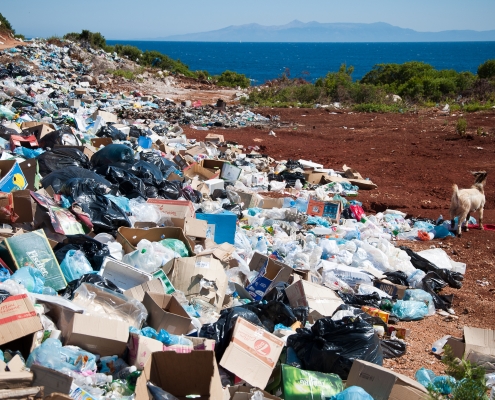
Landfills around the world look the same.
The real problem lies in the amount of time it takes for such items to degrade / decompose (turn into dirt); 2 years for a cigarette, 5 years for chewing gum, 50 years for a styrofoam cup and 450 years to forever for a plastic bottle. Let this time frame sink in for a moment, because it means that we aren’t just causing harm in this generation, but are also leaving trash behind for generations to come. Additionally, as our waste lies in a landfill site, it releases large amounts of toxic gas like methane and carbon dioxide into the air that we breathe, imposing severe health risks to residents living nearby. From there, trash also ends up in neighbouring rivers or lakes, eventually polluting the ocean; which is why it’s expected that by 2050, there will be more plastic than fish in our seas.
Now that we understand the impact of waste and why aiming for zero is necessary, let’s talk about how we can get there. Maintaining a zero-waste lifestyle is a challenge for many, but by making informed decisions and a few compromises, it’s a goal where a little effort can go a long way. A common misconception is that going zero-waste or being eco-friendly is expensive, but in fact its the opposite. When you’re engaging in conscious consumption by shopping less, locally and secondhand while reusing bags & containers, you’ll find yourself saving money rather than spending unnecessarily.
As intimidating as it may sound, these few simple steps will give you a kickstart into the right direction and not only make your household cleaner, but will also have a positive impact on your mental well-being.
1. Practice The “6R’s”
It is natural human behaviour to go with the flow of things as they are instead of questioning it and going against it, even if its unnecessary. So, the first and most crucial step is to take a moment and reflect on what you’re about to do or buy – ask yourselves whether you really need something, and how important it is to you. Secondly, kindly refuse what you don’t need – like straws for a drink that can easily be enjoyed without one, or the urge to buy a new dress for an event even though your wardrobe is already overflowing. Reduce what you do need by sticking to minimal amounts, like trying to fit your groceries into two plastic bags instead of five. Next, reuse what you have as much as possible until it is worn out and cannot be used any further. Then, recycle any plastics, papers and metals with the help of a local establishment (like GarbageCAN). Did you know that recycling one tonne of paper saves 17 trees, 1,400 litres of oil and 26,000 litres of water? (Elle, 2018). Lastly, for non-recyclables like food waste, let it rot and turn into compost that can be used as fertiliser for your plants.

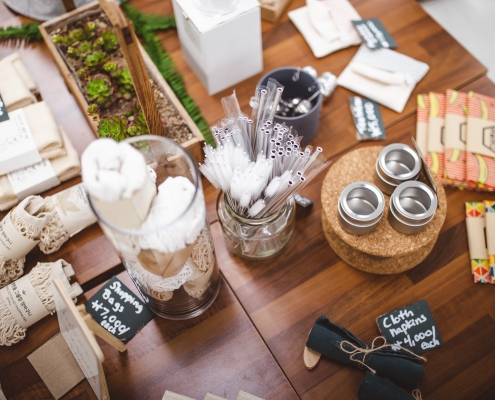
Alternates one can use to go Zero-Waste
2. Invest In The Good Stuff
Since the most crucial element of being zero-waste is avoiding any trash, the most effective way to go about your ordinary life is by getting reusables like stainless steel bottles, utensils and canvas tote bags to begin with – and making sure to carry them around wherever you go. Over a million plastic water bottles are purchased around the world every minute (Guardian, 2017), so having a reusable one means that you can fill it up anytime at cafes, restaurants & workspaces. Keeping a foldable fabric tote bag also comes in handy for when you stop for impromptu purchases on your way back home. Just imagine all the plastic bottles and bags you’ll divert from the landfills in one year alone!
3. Go The Extra Mile
We’re a lazy population, but we need to go the extra mile if we want to achieve any positive change. This means shopping local to support smaller businesses rather than mass-market brands when possible, borrowing from family or friends if you need something for a short period of time instead of making new purchases, and perhaps even opting for secondhand clothing once in a while.
Once you’ve entered the slow yet steady process with these steps, it’ll eventually seem much easier and convenient. The key to successfully being zero-waste is being happy with it, and not feeling burdened by your decisions – because it’s not about denying yourself of things you don’t have, but being satisfied and making the most of what you already have.

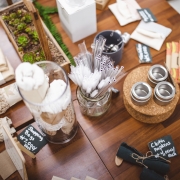




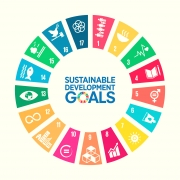
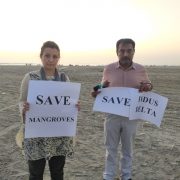

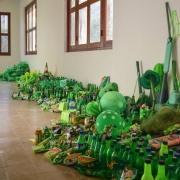


Leave a Reply
Want to join the discussion?Feel free to contribute!